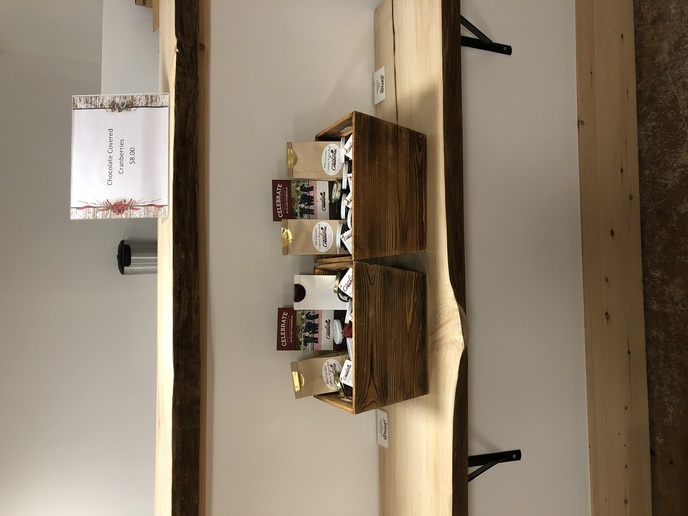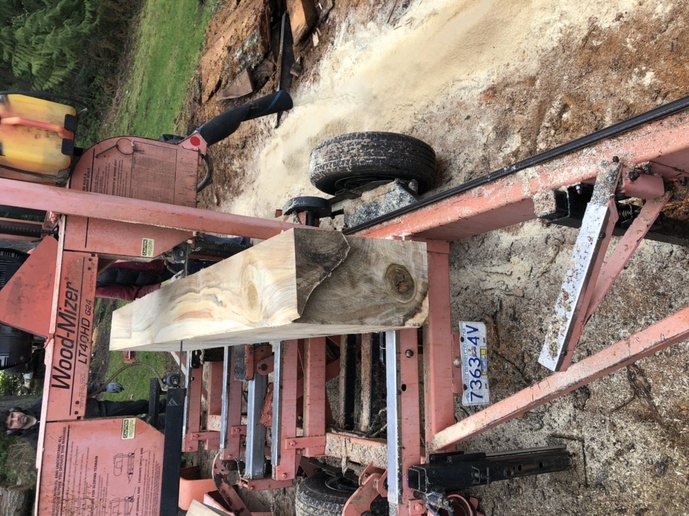A big black cotton wood came down in December. It was about 90-120’ tall depending on where you call the top. It wasn’t the biggest we’ve had but was pretty good sized. It got heavy on one side and was leaning good for the last couple years. Finally came down in the wind... ground was saturated.
Big mess but no damage.
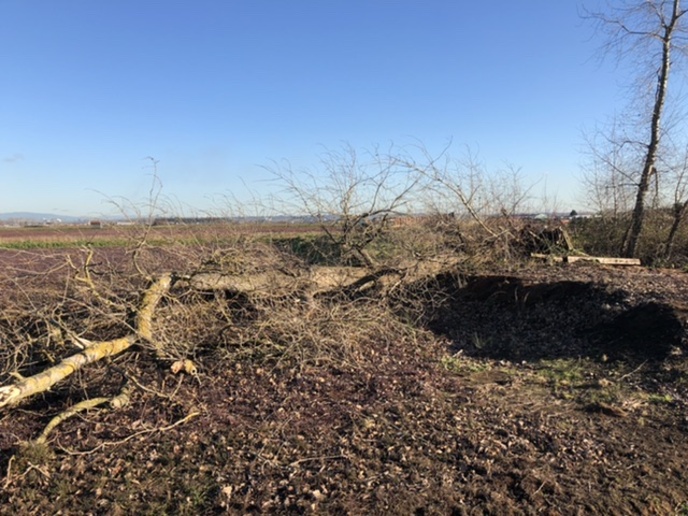
So we cleaned it up and I have the logs in 8-11’. The bottom 18’ is still intact and I’m deciding what to do with it... it’s about 40-50” across.
I took the log from 30’ up to my neighbours place with a mill.
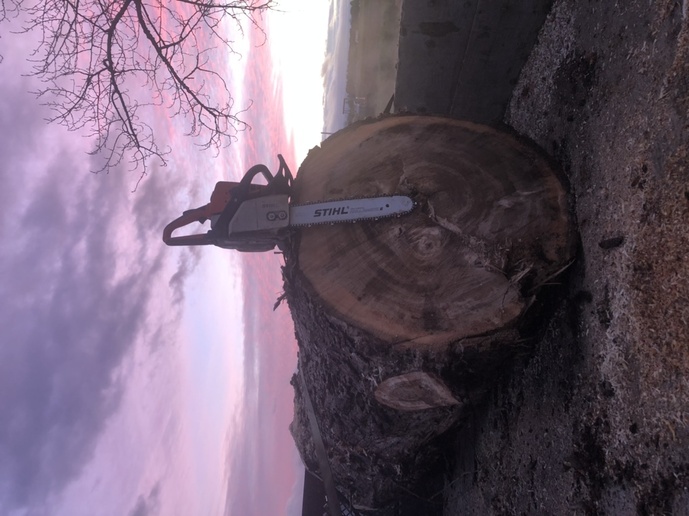
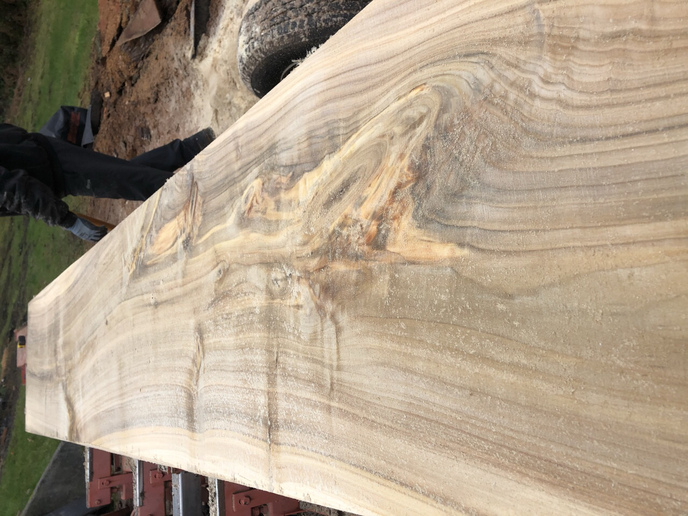
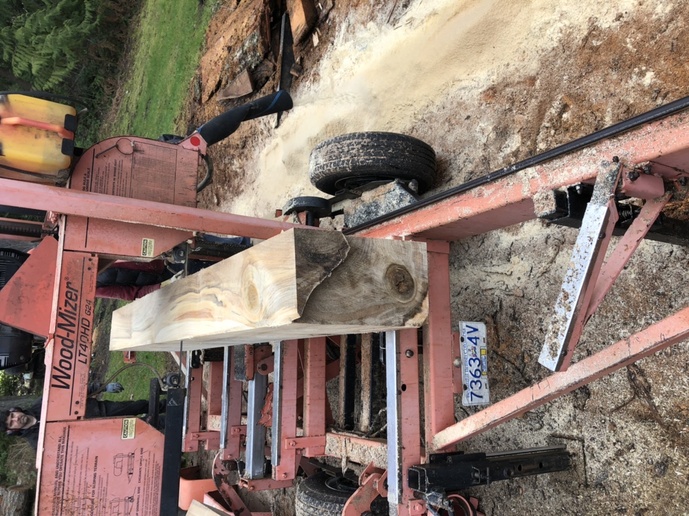
He was not thrilled. It was so hard and fiberous that unless the blade was really sharp it would plunge after the knots. He got it down to a cant about 23”x22” and put a new sharp blade on and then split it in half. From there we cut 1.25” planks.
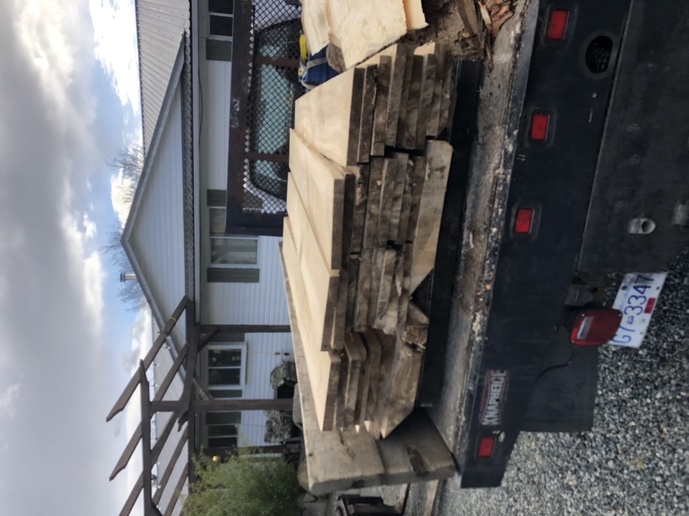
That lift is about 2000 lbs. lot of water weight. The loader tractor felt pretty light on the back end taking that off.
It was suggested to stand them vertical for a week or 2 in this cooler weather to get some moisture out. 28-34 degree and no precip called for the next 7-10 days.
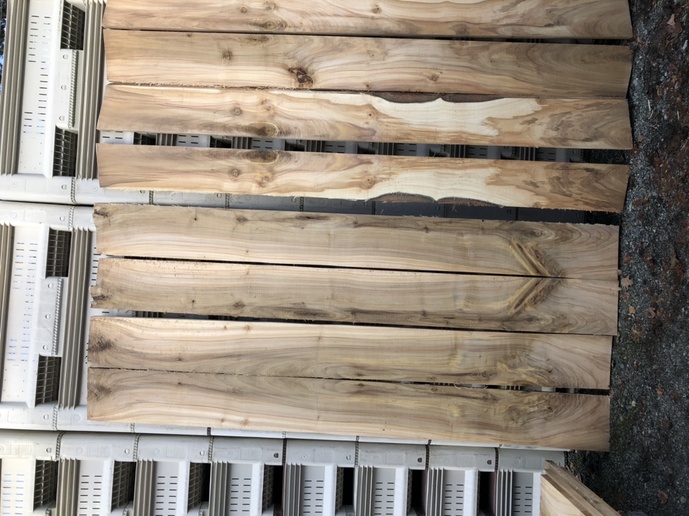
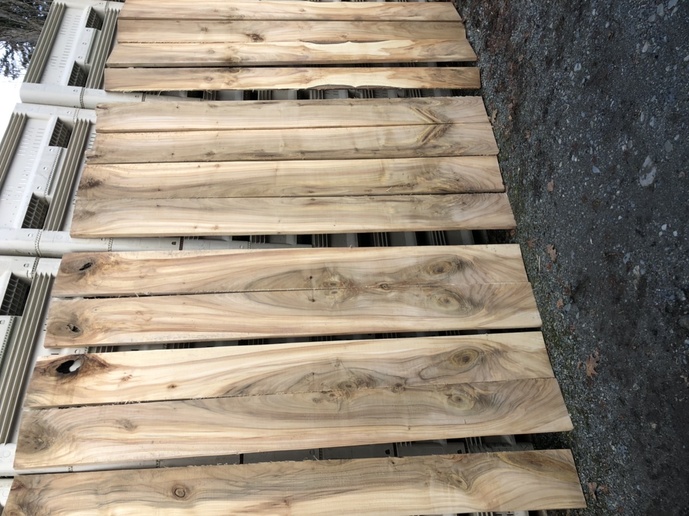
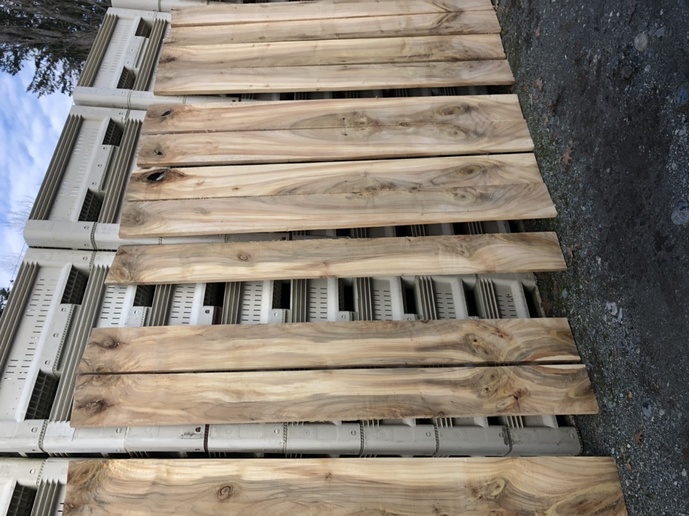
I will then stack and sticker and put them out of the sun under a lean too with some air movement... I have some 12-20” squire cage fans. He also suggested keeping weight on top of the stickered wood to stop it from moving. I can do that no problem as I can put at stack off collapsed wooden totes on top, all on long pallets.
My question to the woodworkers is...
I would like to use these for cabinet doors and maybe faces. Once I get some of the moisture down should I cut the planks down to rough length, say 34” and then restack and sticker for
Another year?
This is a long term project and I really would like to reduce the twisting and warping. I’ve made some counters and shelves with these trees before, 2”+ material but even when we thought it was dry enough it still moved. Luckily they can easily come off and be re planed. But for doors I doing have that option.
Thanks and looking forward to any advise or thoughts.
Grant.
Big mess but no damage.

So we cleaned it up and I have the logs in 8-11’. The bottom 18’ is still intact and I’m deciding what to do with it... it’s about 40-50” across.
I took the log from 30’ up to my neighbours place with a mill.



He was not thrilled. It was so hard and fiberous that unless the blade was really sharp it would plunge after the knots. He got it down to a cant about 23”x22” and put a new sharp blade on and then split it in half. From there we cut 1.25” planks.

That lift is about 2000 lbs. lot of water weight. The loader tractor felt pretty light on the back end taking that off.
It was suggested to stand them vertical for a week or 2 in this cooler weather to get some moisture out. 28-34 degree and no precip called for the next 7-10 days.



I will then stack and sticker and put them out of the sun under a lean too with some air movement... I have some 12-20” squire cage fans. He also suggested keeping weight on top of the stickered wood to stop it from moving. I can do that no problem as I can put at stack off collapsed wooden totes on top, all on long pallets.
My question to the woodworkers is...
I would like to use these for cabinet doors and maybe faces. Once I get some of the moisture down should I cut the planks down to rough length, say 34” and then restack and sticker for
Another year?
This is a long term project and I really would like to reduce the twisting and warping. I’ve made some counters and shelves with these trees before, 2”+ material but even when we thought it was dry enough it still moved. Luckily they can easily come off and be re planed. But for doors I doing have that option.
Thanks and looking forward to any advise or thoughts.
Grant.


